10 Compelling Statistics About Sustainability in Procurement


Businesses are intensifying their commitment to sustainability across every facet of their operations, and procurement is no exception.
But, is it worth it?
What role does procurement play in fostering greener business operations anyway?
What benefits does this bring to companies?
And what are some strategies for the successful integration of sustainability into procurement functions?
Get ready to find out the answers to all these questions and more, as we’re about to get into ten interesting statistics about procurement sustainability.
After all, the numbers never lie.
Let’s dive in.
Are procurement priorities undergoing a transformation?
The latest insights from the 2024 Sustainable Procurement Barometer, a collaborative effort by EcoVadis and Accenture, strongly suggest so.
The study, encompassing nearly 600 buyers and over 1,000 suppliers from 65 countries across 10 sectors, reveals that the motivation behind companies pursuing green procurement has taken somewhat of a turn.
More specifically, it shows that the main driver of sustainable procurement programs is now centered on achieving corporate sustainability goals.
Interestingly, just three years earlier, this wasn’t the case.
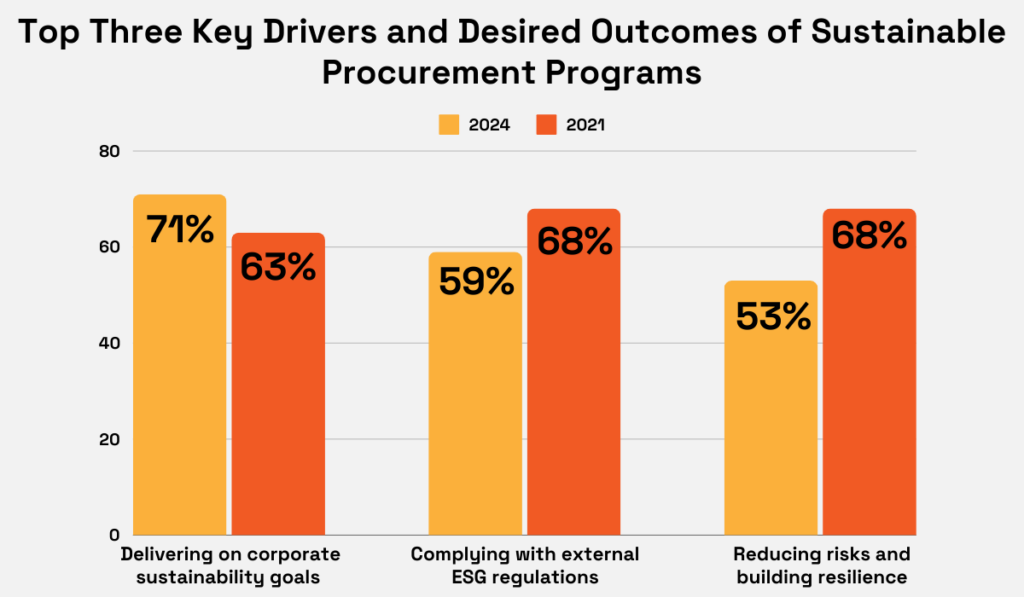
Illustration: Veridion / Data: EcoVadis
In 2021, the primary focus was on risk reduction and compliance with external ESG regulations, with corporate sustainability goals lagging behind.
Fast forward to today, and they are all still the top three priorities in sustainable procurement projects, but corporate sustainability objectives and commitments have taken the lead, rising from 63% in 2021 to 71% in 2024.
Overall, while the previous Barometer was conducted amidst the COVID-19 pandemic, understandably putting risk mitigation in the limelight, we now see an interesting shift.
Ambitions appear to be transitioning from traditional procurement objectives such as ensuring compliance and risk management towards efforts to integrate sustainability and innovation into the core of business strategies.
This is yet another statistic from the EcoVadis and Accenture survey that tells us procurement just might be maturing beyond the traditional and cost-centric goals.
It reveals that only 9% of leaders prioritize cost savings as one of the top three drivers of their sustainable procurement programs, placing them nearly at the bottom of the priority list.
So, what’s taking precedence over cost-cutting?
Let’s take a look at the numbers.
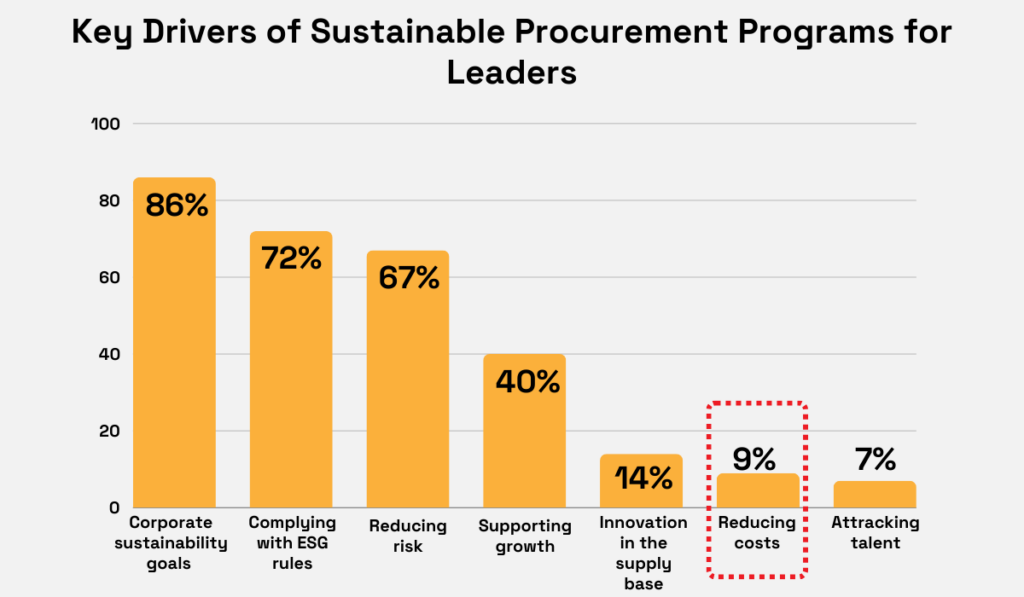
Illustration: Veridion / Data: EcoVadis
Well, leaders seem to be all about the bigger picture now, centering their efforts on broader sustainability goals, regulatory compliance, resilience building, fostering growth, and nurturing innovation within the supply chain.
It’s a shift that speaks volumes about the evolving role of procurement.
It reflects a growing recognition that the procurement function can catalyze real change and create long-term value for organizations, extending beyond purely financial objectives.
At the end of the day, all these sustainable procurement drivers are, in a way, intertwined.
Think about it: when companies are compliant, resilient to risk, work towards reducing their environmental footprint, and constantly innovating, it’s only natural that the operational and procurement expenses will go down, too.
It seems like businesses are finally starting to realize this.
Now, nobody said that achieving sustainability within procurement was going to be easy.
After all, switching to greener purchasing can be a significant change for companies, substantial enough to shake up procurement teams and their usual practices.
That’s precisely what seems to be happening at the moment, judging from the Procurious and Ivalua survey titled “The New Procurement Playbook: How Leaders are Reshaping the Function.”
According to 185 procurement and supply chain leaders surveyed, sustainability expectations and regulations rank among the top five pressures their procurement teams experienced in 2023.
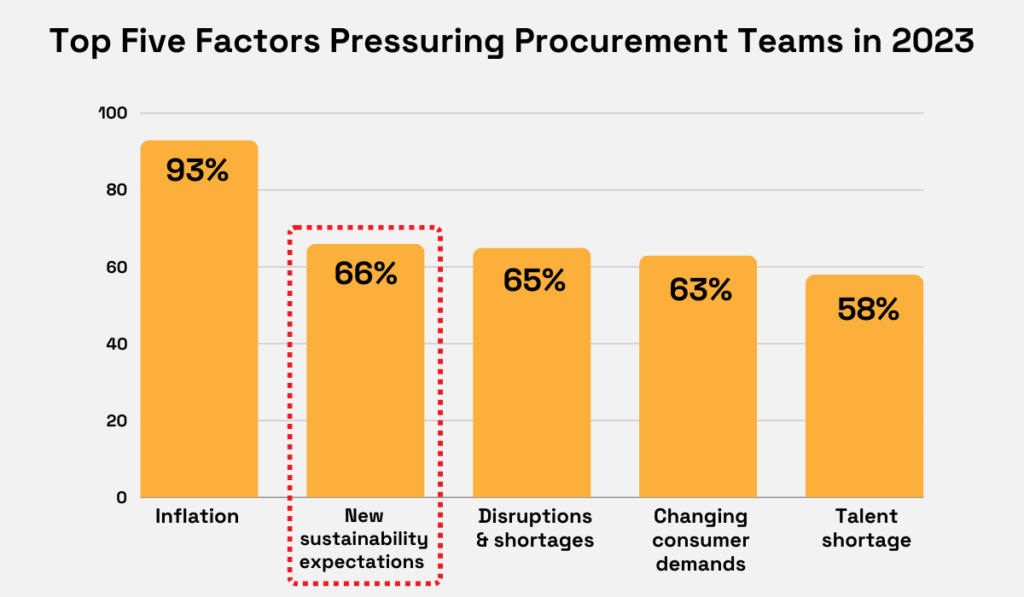
Illustration: Veridion / Data: Procurious
Interestingly, those expectations actually take the second spot on this list, trumping even disruptions, shortages, evolving customer demands, and talent scarcity.
Only inflation ranks higher.
This statistic, however, doesn’t necessarily spell doom.
Rather, it suggests a genuine shift towards sustainability is underway.
Procurement professionals are only grappling with meeting these new expectations and adapting to change.
It’s all part of the process.
In other words, the push for sustainability is still a positive thing, but it does introduce additional complexities and challenges for procurement teams, which can definitely be perceived as sources of pressure.
The question is: will they rise to the challenge or risk being left behind?
The pressure for more sustainable purchasing isn’t coming just from higher-ups within companies but from almost every corner.
The same Procurious and Ivalua survey we mentioned earlier drives this point home, revealing that 78% of businesses are now witnessing a surge in requests for sustainable goods and services.
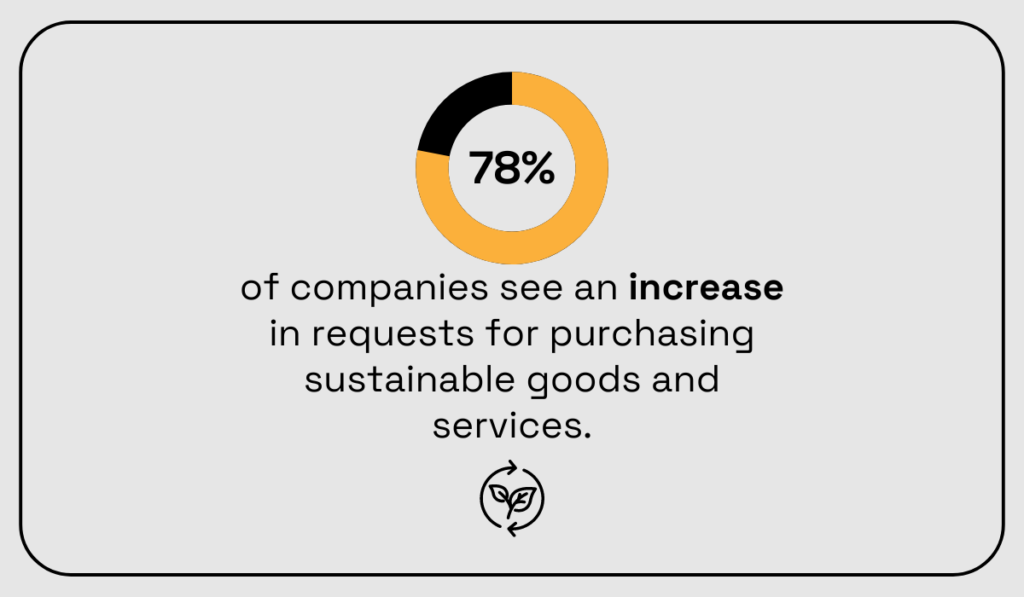
Illustration: Veridion / Data: Procurious
This isn’t something they can afford to ignore.
Obviously, the customers’ and clients’ demand for eco-friendly, socially responsible, and ethically sourced is getting louder and louder.
And today, they have more choices than ever.
Why would they settle for brands that don’t align with their values?
Gemma Thompson, Senior Solutions Advisor at the consulting firm Proxima, agrees.
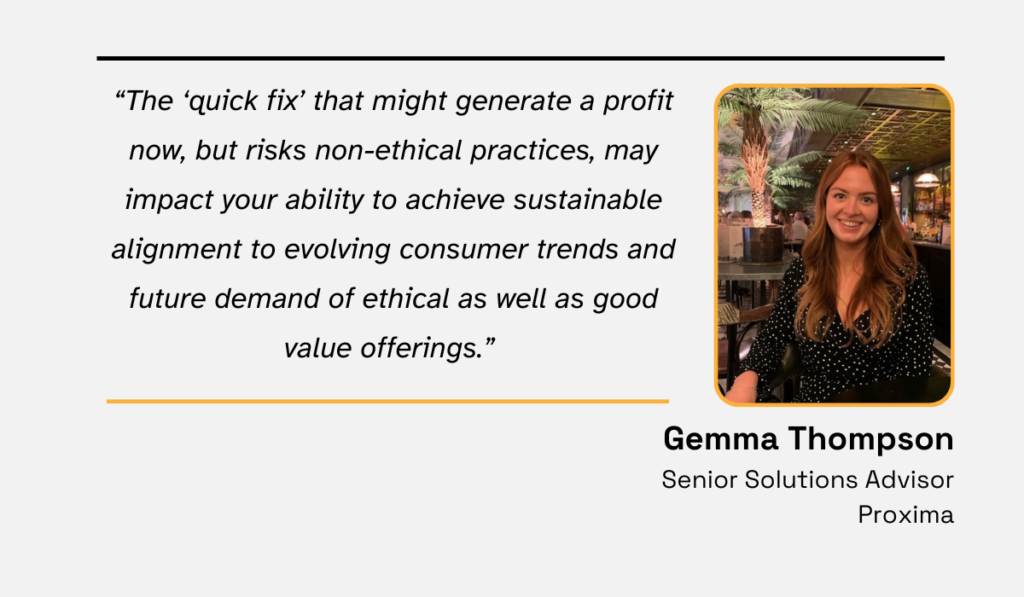
Illustration: Veridion / Quote: Procurement Magazine
She knows that focusing solely on short-term, profit-driven strategies is a surefire way for businesses to sink in the long run.
The bottom line?
Consumer preferences are evolving, and companies must evolve with them.
Put simply, customers want businesses to do better and be better.
Those unwilling to oblige not only miss out on new market opportunities, but also face potential reputational harm and customer loss.
So what exactly makes improving supply chain sustainability so hard?
One major obstacle, identified by Ivalua and Procurious, is the lack of visibility into suppliers.
As it turns out, over a third of companies struggle to efficiently gather information about suppliers’ practices, including their methods of sourcing, production, manufacturing, or transportation of goods.
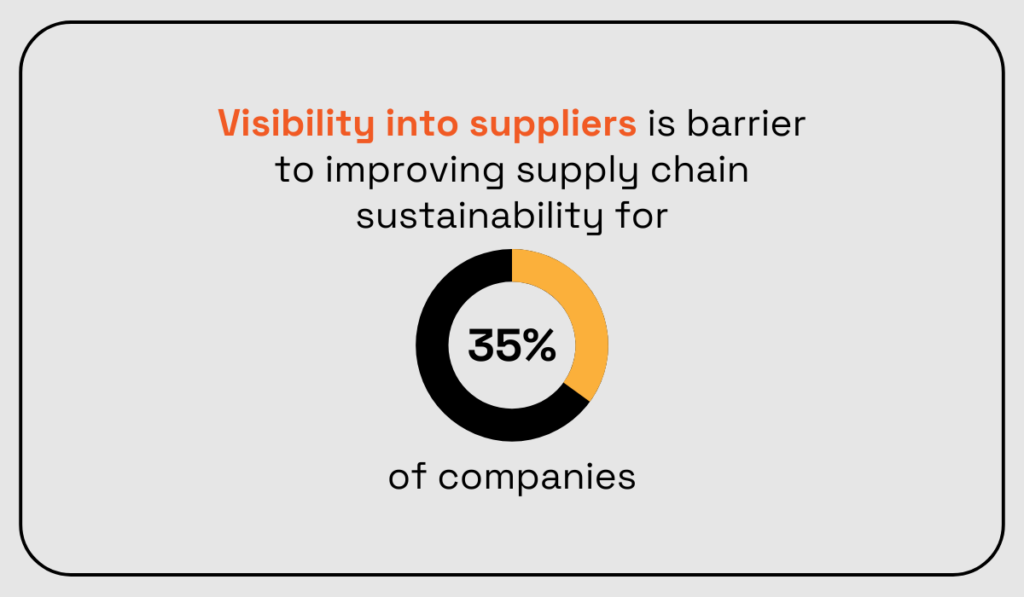
Illustration: Veridion / Data: Procurious
This, naturally, makes verifying compliance with environmental standards, labor practices, and ethical sourcing quite challenging.
Anthony Payne, Chief Marketing Officer at HICX, shares this perspective, too.
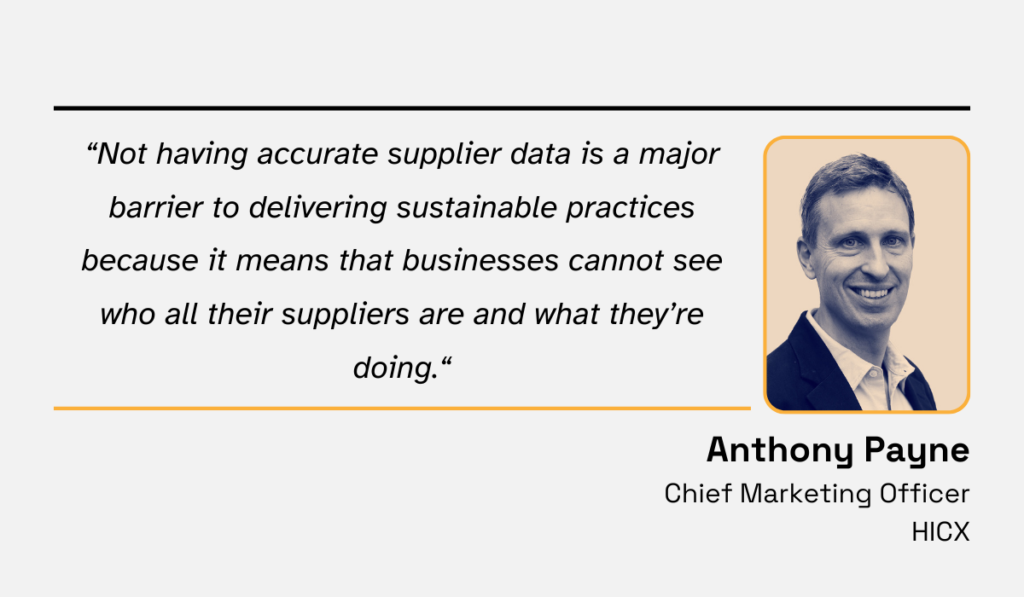
Illustration: Veridion / Quote: CPOstrategy
Luckily, there are solutions that help address this issue.
For instance, supplier sourcing tools like Veridion enable users to screen potential suppliers based on ESG criteria such as diversified ownership, ESG policies, or ESG controversies.

Source: Veridion
This filtering capability empowers procurement professionals to quickly and easily identify suppliers who will serve as reliable partners committed to supporting their sustainability goals every step of the way.
Ultimately, when it comes to sustainability, supplier visibility is non-negotiable.
Sure, this might seem like a hurdle at first, but with the right tools at your disposal, it can certainly be conquered.
The perception of ESG programs is evolving, as indicated by a survey conducted by McKinsey & Company titled “The ESG Premium: New Perspectives on Value and Performance.”
It reveals that over half of the surveyed executives and investment professionals believe that these programs generate stakeholder value, with those in consumer-facing companies slightly more inclined to agree (66%) than those in B2B companies (56%).
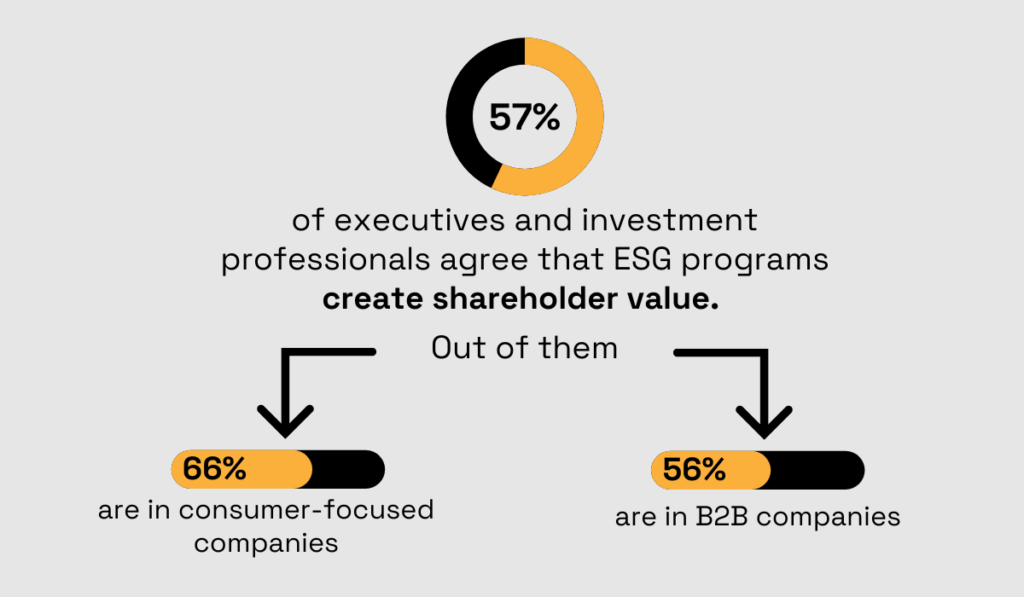
Illustration: Veridion / Data: McKinsey & Company
What this means, essentially, is that businesses are starting to realize that initiatives focused on sustainability, social responsibility, and good governance positively impact their financial performance and long-term viability.
And they aren’t wrong, by any means.
ESG programs have a role to play in mitigating supply chain risks, attracting investors who prioritize sustainability, boosting the company’s reputation, and ultimately delivering sustainable returns for shareholders.
So, is this push toward green procurement only a passing fad, or does it genuinely create value, both in the short and long term, for all stakeholders?
McKinsey’s survey results strongly hint at the latter.
It’s not just a trend, but a significant shift towards a more sustainable future—one where businesses thrive by doing good.
A 2022 report from EY on supply chain sustainability suggests that many businesses still struggle with adequately measuring their sustainability progress.
With only 50% of companies reporting basic KPIs on supply chain sustainability, it becomes obvious that there’s a lack of visibility into businesses’ ESG performance.
This, naturally, makes it quite difficult for them to reach their goals in this area.
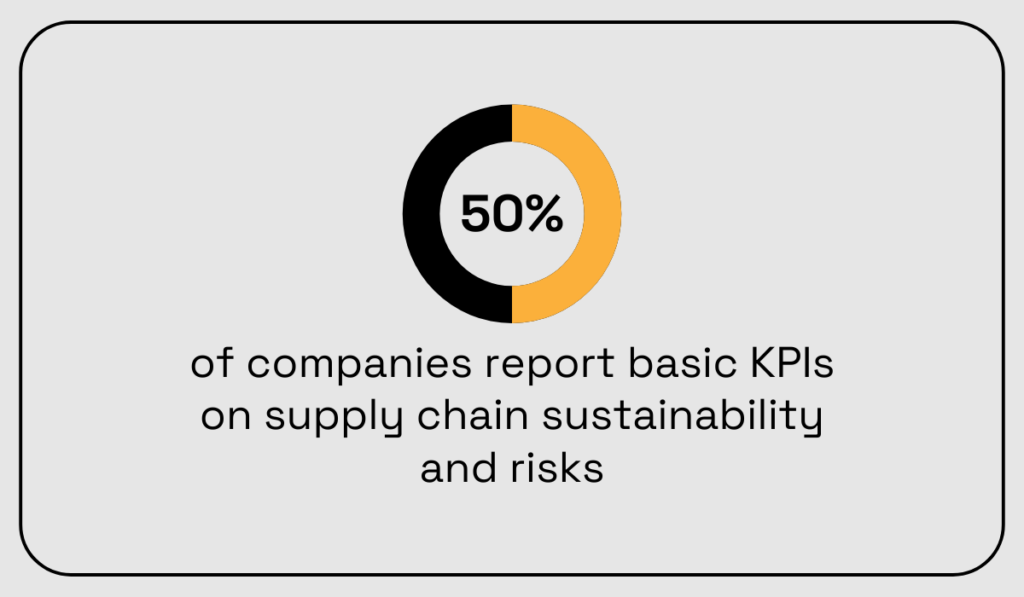
Illustration: Veridion / Data: EY
After all, how are they supposed to improve what they don’t properly measure?
This can be due to some companies not fully recognizing the importance of tracking supply chain sustainability and risk, making them prioritize other aspects of their operations over ESG concerns.
It can also be due to the complexity and resource-intensive nature of collecting relevant data and monitoring those KPIs, especially if businesses don’t have an efficient system in place for that.
So what can be done about this?
What can companies do to ensure seamless and precise KPI tracking and measuring and to boost their ESG performance?
The answer may lie, at least in part, in the next statistic we’re about to cover.
The same EY survey indicates that a significant number of companies are recognizing the potential of digitization when it comes to improving their sustainability performance measuring.
Apparently, nearly two-thirds of the survey respondents are fast-tracking the integration of technology for this very purpose.
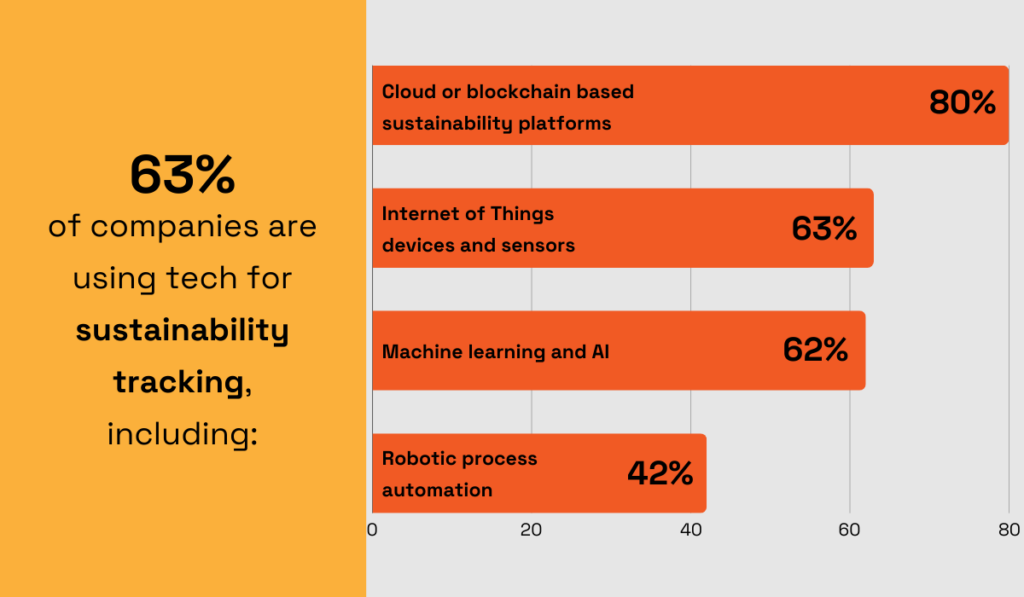
Illustration: Veridion / Data: EY
Among the tools they are using, the top four include cloud-based or blockchain-based sustainability platforms, Internet of Things (IoT) devices and sensors, machine learning and AI, as well as robotic process automation.
Each of these systems helps consolidate data from various sources, enabling real-time or near-real-time insights into suppliers, vendors, customers, and other relevant aspects-
This, in turn, increases visibility across entire operations and supply chains.
With information being so accessible and insights pouring in non-stop, sustainability measurement becomes a breeze—precise, efficient, and thorough.
Technology and performance measuring simply go hand in hand, there’s no denying that.
These digital tools are key to complete transparency companies need to effectively track, monitor, analyze, and optimize their processes and unlock new levels of sustainability.
Working towards supply chain sustainability isn’t contradictory to profitability.
In fact, it can serve as a catalyst for it, and EY has the numbers to back this up.
According to their supply chain sustainability report, 25% of companies have already experienced an increase in revenue due to their sustainability efforts, and an additional 63% anticipate similar outcomes in the next one to three years.
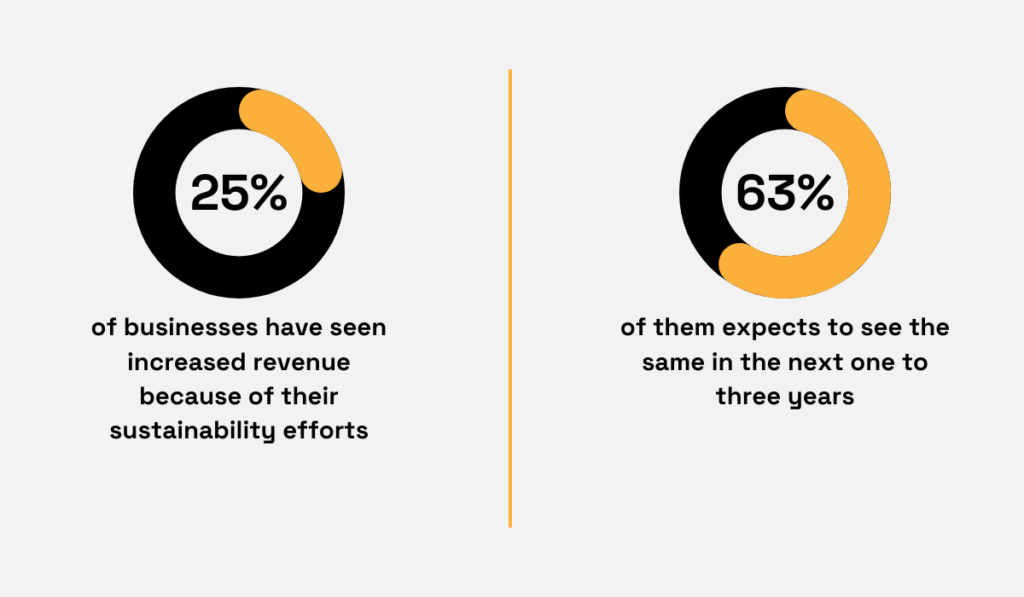
Illustration: Veridion / Data: EY
These figures clearly indicate a correlation between financial performance and green procurement initiatives.
Granted, ensuring sustainability takes work. But the payoff is immense.
It not only mitigates supply chain risks but also improves the company’s reputation, reduces waste, strengthens customer loyalty, and opens doors to new markets, customers, or partnerships whose values align with yours.
It’s only natural that increased revenue would follow suit.
So, contrary to popular belief, financial performance and sustainability aren’t enemies, explains Matias Pollmann-Larsen, Accenture’s Managing Director.
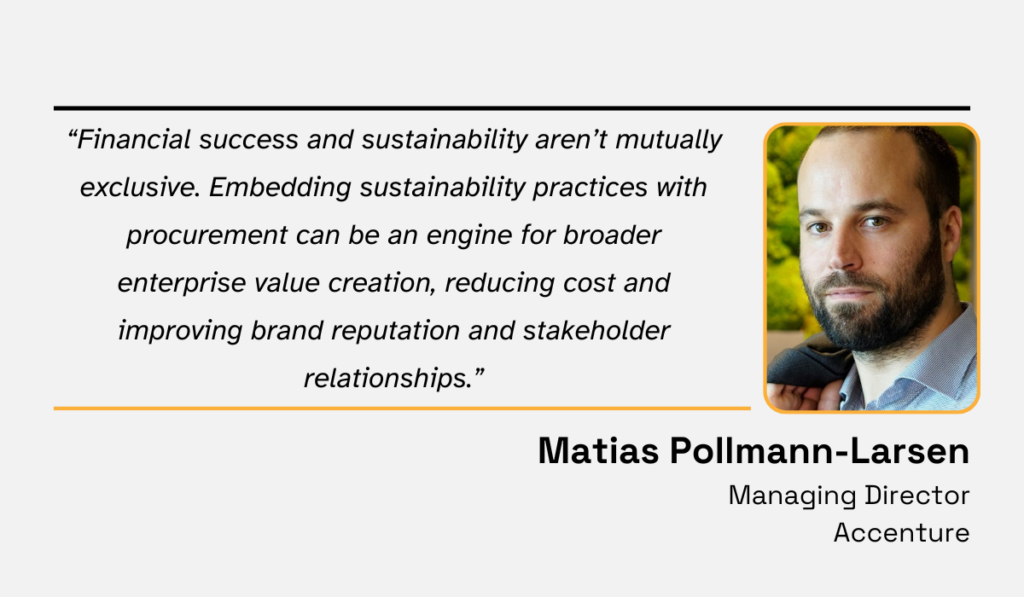
Illustration: Veridion / Quote: Procurement Magazine
They don’t just co-exist, but are symbiotic partners, benefiting both the bottom line and the planet.
In other words, boosting sustainability is a strategic move that not only contributes positively to society and the environment but also makes good business sense.
Considering all the remarkable benefits that come with it, it’s no surprise that CPOs are eager to invest more of their time, effort, and resources into boosting sustainability.
However, a 2021 report by McKinsey & Company titled “Buying into a More Sustainable Value Chain” reveals a significant hurdle: while procurement professionals are open to embracing sustainability, many are not adequately prepared to translate this aspiration into action.
As it turns out, 60% of them lack an aligned strategy for achieving their goals.
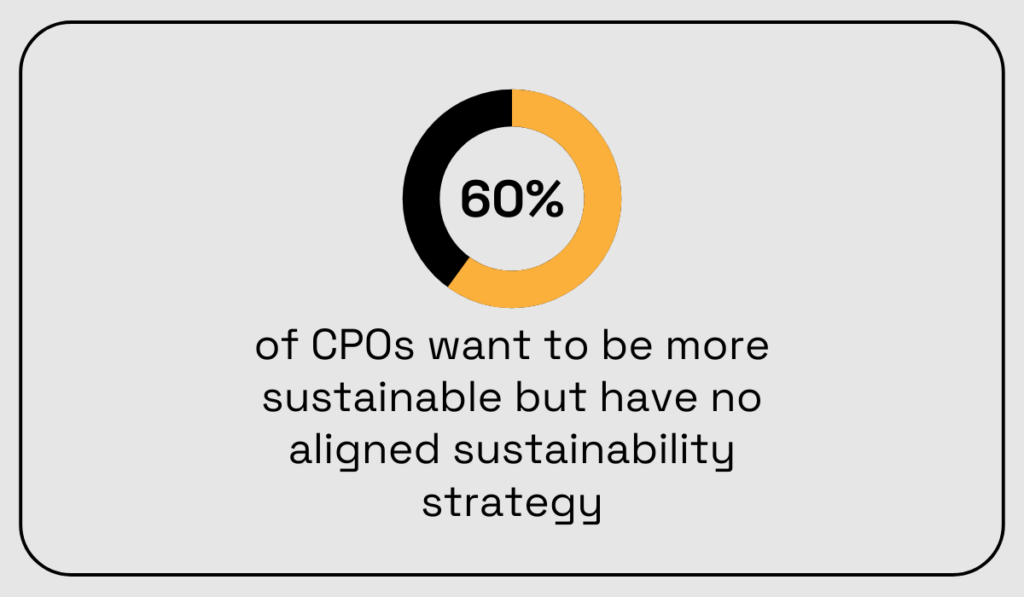
Illustration: Veridion / Data: McKinsey & Company
In other words, they are aware of sustainability’s importance and procurement’s role in securing it, but they simply don’t have a clear and coherent plan to implement sustainable practices within their procurement processes.
This is even further emphasized by the fact that only 20% prioritize sustainability measures in sourcing decisions, and a mere 10% incorporate sustainability into their category strategies.
Obviously, that’s not a way to go; success depends on a solid strategy.
Take Puma, for example.
Anne-Laure Descours, their Chief Sourcing Officer, attributes the company’s sustainability accomplishments to their “Forever Better” strategy.
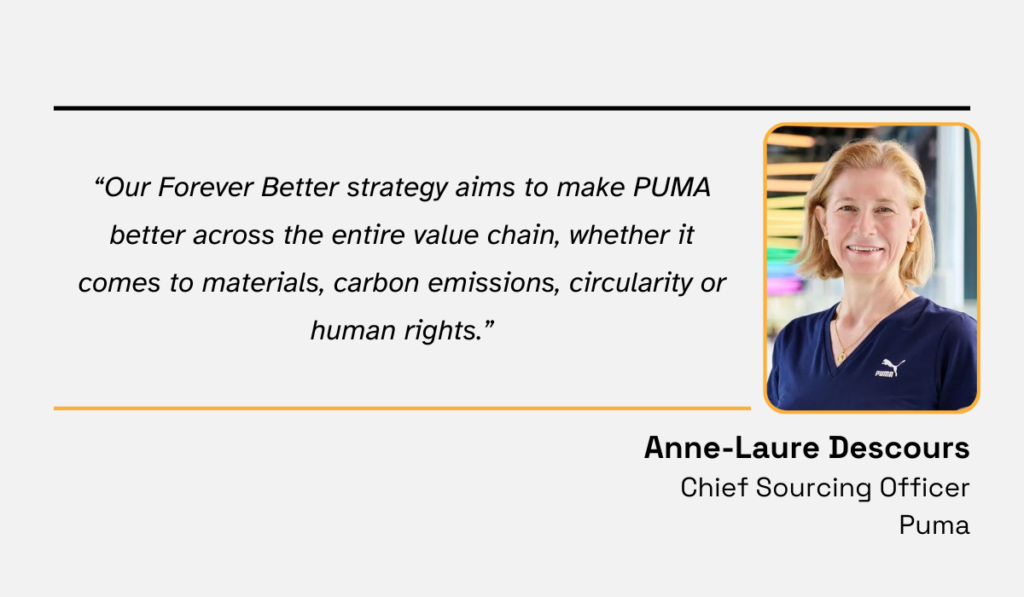
Illustration: Veridion / Quote: Procurement Magazine
This initiative led to improved material sourcing, resulting in a nearly one-third reduction in CO₂ emissions from materials, and facilitated the adoption of 100% renewable energy in Puma offices and facilities, causing an impressive 86% decrease in carbon emissions.
But the lesson to be learned from this statistic doesn’t apply just to sportswear giants.
No matter the size of your company or the sector you’re in, without a well-thought-out sustainable procurement plan, you simply can’t get very far.
That much is certain.
All things considered, sustainability is undeniably becoming a non-negotiable aspect of procurement strategies.
Granted, we’re definitely not completely there yet, and there’s still a mountain of work ahead.
After all, such significant changes are never without challenges.
Nevertheless, the future is unmistakably green, and businesses, sooner or later, will have to adapt.
Not only for their own good, but for their employees, customers, clients, partners, and, most importantly, the environment and society at large.